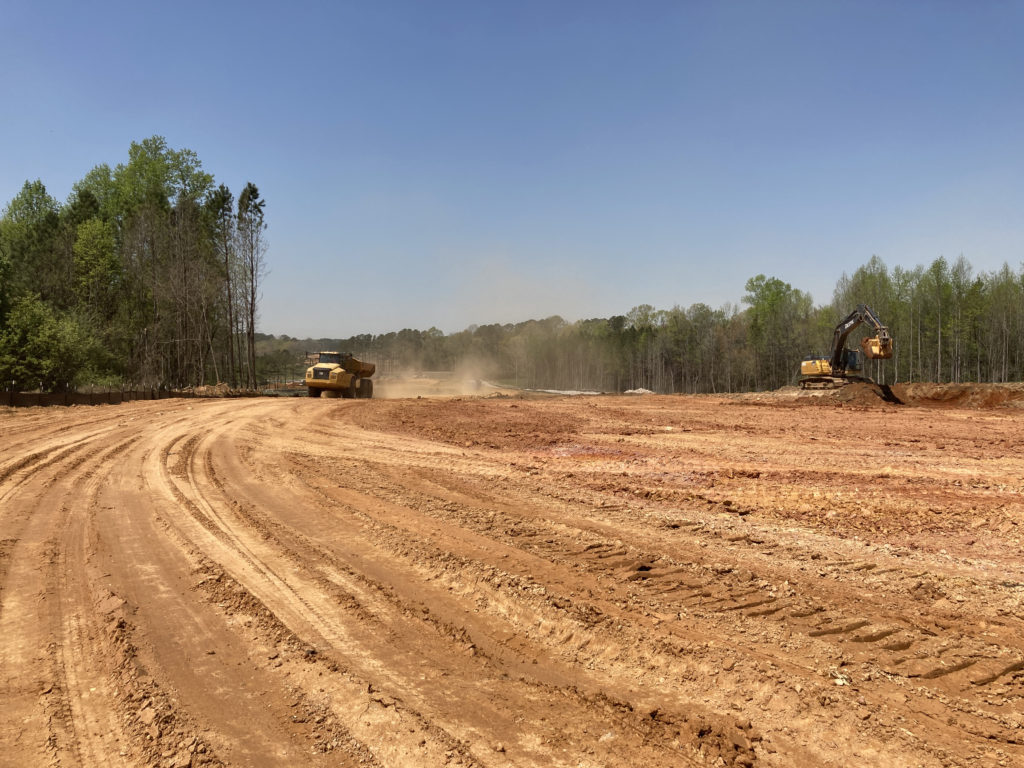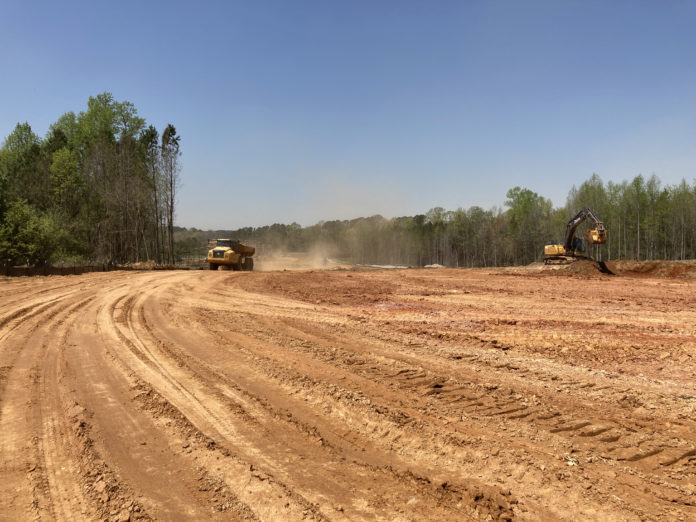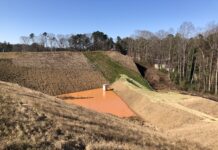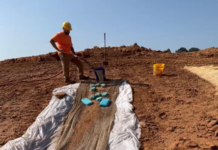By Rich McLaughlin, Ph.D.
Controlling “fugitive” dust on construction sites is often required as it is a major source of air pollution and a health hazard. The most common approach is to apply water periodically to create adhesion between soil particles, but this is often very short lived. In recent experiments on gravel roads, for instance, we found that water lost its effectiveness for dust control in less than an hour during the summer months. This review will focus on a number of approaches to dust control and different ways to improve dust management.
Natural Soybean Biomaterial
A relatively new treatment uses a combination of calcium chloride, urea and a urease enzyme source such as soybeans. When combined, calcium carbonate is precipitated and it cements the soil particles together. This system, called enzyme-induced carbonate precipitation (EICP), was compared to water and calcium chloride alone for dust and erosion control in a wind tunnel.1 Two sources of urease were tested—soybean and jackbean—to determine if there was any difference in the effectiveness of the enzyme. Both EICP systems performed as well or better than calcium chloride in controlling dust and were much more effective than water alone. Either mixing the EICP system into the soil or spraying on the surface appeared to be effective. The authors suggested using soybeans as the enzyme source as they are widely available.
Life Cycle Sustainability
In a related study, a life cycle sustainability analysis was done on three dust control strategies: water, magnesium chloride and EICP.2 This involved a variety of environmental impacts and costs, from the manufacture, application and longevity of treatment. Overall, the EICP had lower potential costs than water by more than $30,000 ac-1 with lower greenhouse gas emissions and water consumption. However, magnesium chloride had lower costs and environmental impacts, depending on how often it needed to be applied. One caveat was that potential issues with salinization from the magnesium chloride were not considered. In addition, magnesium chloride is only effective if humidity is above approximately 30% as it functions by attracting moisture from the air.
Decision-Making Models
Managing the dust also requires some decision-making, and two studies suggest how that can be accomplished. One approach was to model the potential dust generation under various conditions, including time of soil exposure, soil type and size of exposed area.3 The construction induced dust emission model (CIDEM) was applied to a rapidly developing area north of Toronto, Canada, using aerial images from 2012–2020. The amount of dust <10 um (PM10) generated was estimated over the years based on construction site activity. The need to apply dust control was determined based on the area exposed and the soil type, and the costs were estimated. For example, all 10 soil types with exposed areas <1 ha did not require dust control, but once the area reached 20 ha, six of the 10 soil types required dust control to be in compliance. The authors suggest this tool could be used to decide when dust control is needed.
In contrast, Kaluarachchi et al. (2021) discuss how to motivate construction site workers to manage dust.4 They used a survey of workers at all levels at two large construction sites to help confirm their hypotheses. Overall, they suggest that by providing information on potential environmental and health impacts of dust, the “personal norms” of the workers would help motivate them to control dust. The influence of the company culture appeared to be less important than the personal desire to avoid having negative impacts on people and the environment. However, they indicated that this may be the effect of a company culture “crowding out” the individual feeling of responsibility. That is, if the company has a strong policy to control dust, the individual will feel less of a moral responsibility for it.

References
1) Baziar, M. H., M. Sanaie, O. E. Amirabadi. 2021. Mitigation of dust emissions of silty sand induced by wind erosion using natural soybean biomaterial. International Journal of Civil Engineering 19:595–606. https:// DOI:10.1007/s40999-020-00587-4.
2) Raymond, A. J., A. Kendall, J. T. DeJong, E. Kavazanjian, M. A. Woolley, and K. K. Martin. 2021. Life cycle sustainability assessment of fugitive dust control methods. J. Constr. Eng. Manage. 147(3): 04020181. https://doi.org/10.1061/(ASCE)CO.1943-7862.0001993.
3) Clement, D., A. A. Aliabadi, and J. Mackey. 2021. Dust emissions management model for construction sites. J. Constr. Eng. Manage., 2021, 147(8): 04021092. https://doi.org/10.1061/(ASCE)CO.1943-7862.0002121.
4) Kaluarachchi, M., A. Waidyasekara, R. Rameezdeen, and N. Chileshe. 2021. Mitigating dust pollution from construction activities: a behavioural control perspective. Sustainability 13, 9005. https://doi.org/10.3390/su13169005.
About the Expert
Rich McLaughlin, Ph.D., received a B.S. in natural resource management at Virginia Tech and studied soils and soil chemistry at Purdue University for his master’s degree and doctoral degree. He is a professor and extension specialist in the Soil Science Department at North Carolina State University in Raleigh, North Carolina, specializing in erosion, sediment and turbidity control.













